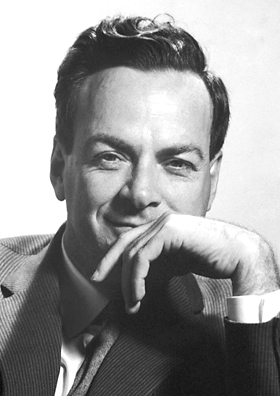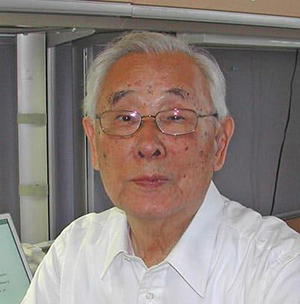Related Research Articles

Paul Adrien Maurice Dirac was an English theoretical physicist who is considered to be one of the founders of quantum mechanics and quantum electrodynamics. He was the Lucasian Professor of Mathematics at the University of Cambridge, a professor of physics at Florida State University and the University of Miami, and a 1933 Nobel Prize in Physics recipient.
QED may refer to:

In theoretical physics, quantum field theory (QFT) is a theoretical framework that combines classical field theory, special relativity, and quantum mechanics. QFT is used in particle physics to construct physical models of subatomic particles and in condensed matter physics to construct models of quasiparticles.

In particle physics, quantum electrodynamics (QED) is the relativistic quantum field theory of electrodynamics. In essence, it describes how light and matter interact and is the first theory where full agreement between quantum mechanics and special relativity is achieved. QED mathematically describes all phenomena involving electrically charged particles interacting by means of exchange of photons and represents the quantum counterpart of classical electromagnetism giving a complete account of matter and light interaction.

Richard Phillips Feynman was an American theoretical physicist, known for his work in the path integral formulation of quantum mechanics, the theory of quantum electrodynamics, the physics of the superfluidity of supercooled liquid helium, as well as his work in particle physics for which he proposed the parton model. For his contributions to the development of quantum electrodynamics, Feynman received the Nobel Prize in Physics in 1965 jointly with Julian Schwinger and Shin'ichirō Tomonaga.
A timeline of atomic and subatomic physics.

Julian Seymour Schwinger was a Nobel Prize-winning American theoretical physicist. He is best known for his work on quantum electrodynamics (QED), in particular for developing a relativistically invariant perturbation theory, and for renormalizing QED to one loop order. Schwinger was a physics professor at several universities.

Shinichiro Tomonaga, usually cited as Sin-Itiro Tomonaga in English, was a Japanese physicist, influential in the development of quantum electrodynamics, work for which he was jointly awarded the Nobel Prize in Physics in 1965 along with Richard Feynman and Julian Schwinger.

Renormalization is a collection of techniques in quantum field theory, statistical field theory, and the theory of self-similar geometric structures, that are used to treat infinities arising in calculated quantities by altering values of these quantities to compensate for effects of their self-interactions. But even if no infinities arose in loop diagrams in quantum field theory, it could be shown that it would be necessary to renormalize the mass and fields appearing in the original Lagrangian.

In quantum field theory, the quantum vacuum state is the quantum state with the lowest possible energy. Generally, it contains no physical particles. The term zero-point field is sometimes used as a synonym for the vacuum state of a quantized field which is completely individual.

QED: The Strange Theory of Light and Matter is an adaptation for the general reader of four lectures on quantum electrodynamics (QED) published in 1985 by American physicist and Nobel laureate Richard Feynman.

In particle physics, the history of quantum field theory starts with its creation by Paul Dirac, when he attempted to quantize the electromagnetic field in the late 1920s. Heisenberg was awarded the 1932 Nobel Prize in Physics "for the creation of quantum mechanics". Major advances in the theory were made in the 1940s and 1950s, leading to the introduction of renormalized quantum electrodynamics (QED). QED was so successful and accurately predictive that efforts were made to apply the same basic concepts for the other forces of nature. By the late 1970s, these efforts successfully utilized gauge theory in the strong nuclear force and weak nuclear force, producing the modern Standard Model of particle physics.
The first Shelter Island Conference on the Foundations of Quantum Mechanics was held from June 2–4, 1947 at the Ram's Head Inn in Shelter Island, New York. Shelter Island was the first major opportunity since Pearl Harbor and the Manhattan Project for the leaders of the American physics community to gather after the war. As Julian Schwinger would later recall, "It was the first time that people who had all this physics pent up in them for five years could talk to each other without somebody peering over their shoulders and saying, 'Is this cleared?'"
Carl M. Bender is an American applied mathematician and mathematical physicist. He currently holds the Wilfred R. and Ann Lee Konneker Distinguished Professorship of Physics at Washington University in St. Louis. He also has joint positions as professor of physics at the University of Heidelberg and as visiting professor of applied mathematics and mathematical physics at Imperial College, London.
Sidney Michael Dancoff was an American theoretical physicist best known for the Tamm–Dancoff approximation method and for nearly developing a renormalization method for solving quantum electrodynamics (QED).
The Oldstone Conference of 11 to 14 April 1949 was the third of three postwar conferences held to discuss quantum physics; arranged for the National Academy of Sciences by J. Robert Oppenheimer, who was again chairman. It followed the Shelter Island Conference of 1947 and the Pocono Conference of 1948. There were 24 participants; new participants were Robert Christie, Freeman Dyson, George Placzek, and Hideki Yukawa.

Tōichirō Kinoshita was a Japanese-born American theoretical physicist.
Robert Curtis Retherford (1912–1981) was an American physicist. He was a graduate student of Willis Lamb at Columbia Radiation Laboratory. Retherford and Lamb performed the famous experiment revealing Lamb shift in the fine structure of hydrogen, a decisive experimental step toward a new understanding of quantum electrodynamics.
Jagdish Mehra was an Indian-American historian of science.
Norman Myles Kroll was an American theoretical physicist, known for his pioneering work in QED.
References
- Griffin, John & Mary (1997). Richard Feynman: A Life in Science. England: Viking Press. pp. 108, 110. ISBN 0-670-87245-8.
- Mehra, Jagdish (1994). The Beat of a Different Drum: The life and science of Richard Feynman. Oxford, England: Clarendon Press. pp. 245–249. ISBN 0-19-853948-7.